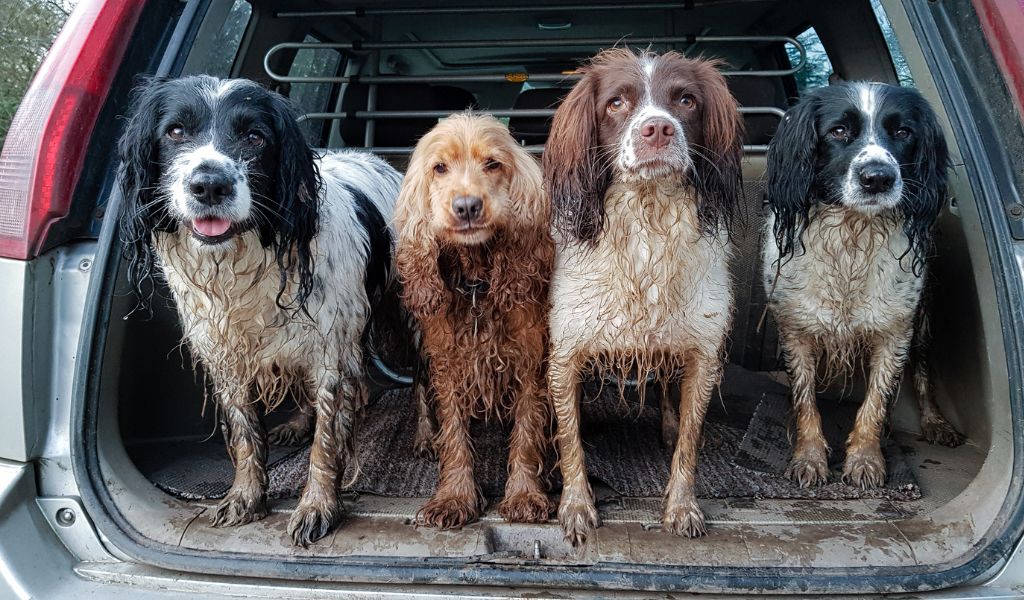Are you tired of your spaniel pulling and jumping on walks, making your daily stroll a hassle instead of a relaxing activity?
Well, fear not! With some patience, dedication, and the right training techniques, you can teach your spaniel to be calm and relaxed on walks.
In this article, we will explore some tips and tricks to help you achieve this goal.
Understanding Your Spaniel’s Behaviour
Before diving into training techniques, it’s essential to understand why your spaniel behaves the way they do on walks.
As mentioned earlier, spaniels are active and energetic dogs, and they love to explore their surroundings.
They have a strong prey drive, which makes them prone to chasing small animals, such as squirrels or rabbits.
Additionally, spaniels are very social and love to interact with people and other dogs. All these factors contribute to their excitement and enthusiasm on walks.
Establishing a Routine
Establishing a routine is crucial when teaching your spaniel to be calm and relaxed on walks.
Dogs thrive on routine and predictability, so try to walk your spaniel at the same time every day.
This will help them understand when it’s time to go for a walk and what to expect during the walk.

Choosing the Right Walking Equipment
Choosing the right equipment for your spaniel can make a significant difference in their behaviour on walks.
A well-fitted harness is preferable to a collar, as it puts less strain on the neck and is more comfortable for the dog.
Avoid retractable leads, as they can encourage pulling and are not suitable for training. Instead, use a standard lead with a length of around six feet.
Teaching the “Heel” Command
The “heel” command is a valuable tool when teaching your spaniel to be calm and relaxed on walks.
This command teaches your dog to walk calmly beside you, without pulling or jumping.
To teach this command, start by walking with your spaniel on a leash. Whenever they start to pull, stop walking and stand still.
Wait for them to come back to you, and when they do, reward them with a treat and continue walking.
Repeat this process, and gradually increase the distance you walk before stopping. With time and practice, your spaniel will learn to walk beside you calmly.
Teaching the “Leave It” Command
The “leave it” command is another important tool when teaching your spaniel to be calm on walks.
This command teaches your dog to ignore distractions, such as small animals or other dogs, and focus on you instead.
To teach this command, start by holding a treat in your hand and letting your spaniel sniff it. Say “leave it” and close your hand around the treat.
When your spaniel stops trying to get the treat, praise them and give them a different treat.
Repeat this process, gradually increasing the level of distraction.
- Understand your spaniel’s behaviour to help with training.
- Establish a routine for walks and use the right equipment, such as a harness and standard leash.
- Teach “heel” command for walking calmly and “leave it” for ignoring distractions.
- Reward good behavior with treats, praise, and affection.
- Provide exercise and mental stimulation to enhance training outcomes.
- Seek professional help if needed.
- Be patient, consistent, and positive in training approach.
Rewarding Good Behaviour
Positive reinforcement is key when training your spaniel to be calm and relaxed on walks.
Whenever your dog exhibits good behaviour, such as walking calmly or ignoring distractions, reward them with treats, praise, and affection.
This will help them associate good behaviour with positive outcomes and encourage them to repeat it.
Dealing with Distractions
Distractions are a significant challenge when teaching your spaniel to be calm on walks.
To minimise distractions, avoid walking in busy areas or areas with a lot of small animals.
If your spaniel becomes distracted, use the “leave it” command and reward them for ignoring the distraction.
If necessary, stop walking and wait for your dog to calm down before continuing.
Gradual Progression
Training your spaniel to be calm and relaxed on walks takes time and patience.
Start with short walks and gradually increase the distance and duration of the walks as your dog’s behaviour improves.
Remember to be consistent and patient, and don’t expect immediate results.

Exercise and Mental Stimulation
Providing your spaniel with adequate exercise and mental stimulation is essential for their well-being and can also help with their behaviour on walks.
Make sure your dog gets enough physical exercise every day, such as playing fetch or going for a run.
Additionally, provide them with mental stimulation, such as puzzle toys or training exercises.
Seeking Professional Help
If you’re having difficulty teaching your spaniel to be calm and relaxed on walks, don’t hesitate to seek professional help.
A certified dog trainer can provide you with personalised training techniques and guidance to help you achieve your goals.
Frequently Asked Questions (FAQs)
How long does it take to train a spaniel to be calm on walks?
Training a spaniel to be calm on walks varies from dog to dog, but it can take several weeks to several months of consistent training to see significant improvement.
Can you use a collar instead of a harness for walking a spaniel?
While a collar can be used for walking a spaniel, a harness is generally a better option as it’s more comfortable and puts less strain on the neck.
What are some mental stimulation activities for spaniels?
Some mental stimulation activities for spaniels include puzzle toys, scent games, and obedience training exercises.
Can an older spaniel be trained to be calm on walks?
Yes, it’s never too late to train a dog, and older spaniels can be trained to be calm and relaxed on walks with patience and consistency.
What should I do if my spaniel becomes overly excited on walks?
If your spaniel becomes overly excited on walks, use the “leave it” command and reward them for calm behaviour.
If necessary, stop walking and wait for your dog to calm down before continuing.
Can treats be used as a form of positive reinforcement in training?
Yes, treats are a great way to positively reinforce good behaviour during training.
However, be sure to use them in moderation to avoid overfeeding your dog.
How often should I walk my spaniel?
The frequency of walks for a spaniel depends on their age, health, and energy level.
Generally, spaniels require at least one hour of exercise daily, split into multiple walks throughout the day.
Conclusion and final thoughts
Teaching your spaniel to be calm and relaxed on walks can be a challenging but rewarding experience.
By understanding your dog’s behaviour, establishing a routine, choosing the right equipment, teaching essential commands, rewarding good behaviour, dealing with distractions, providing exercise and mental stimulation, and seeking professional help if needed, you can help your spaniel become a well-behaved and enjoyable walking companion.
Remember to be patient, consistent, and positive in your training approach, and your spaniel will surely thrive.




